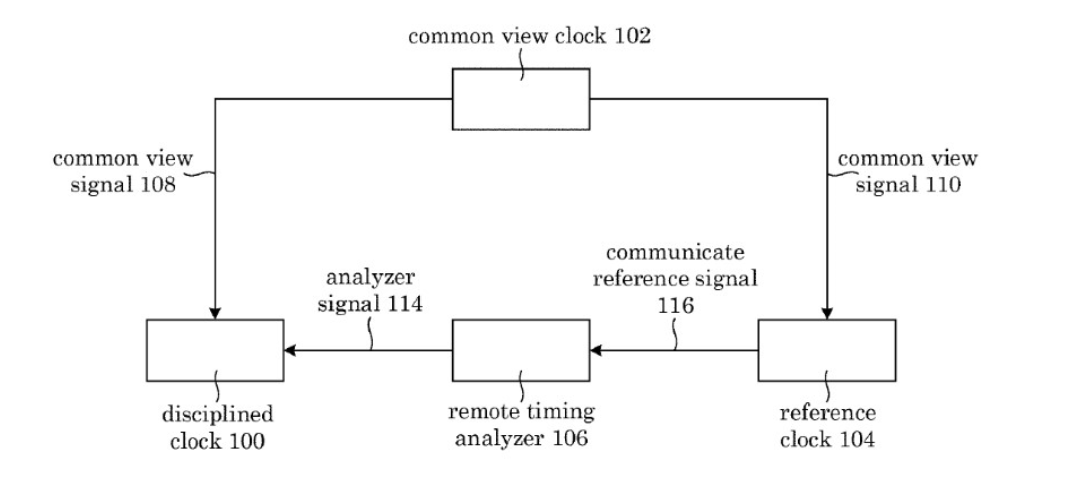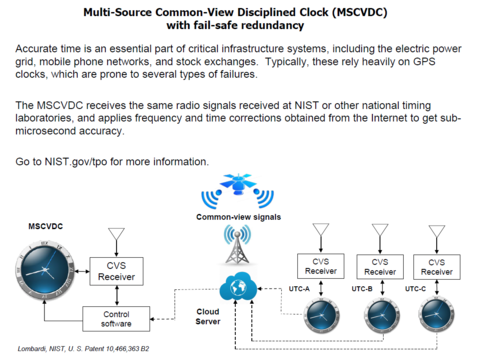Patent of the Month: May 2020

Technology Description
Disciplined clocks work by using an external reference source to synchronize the time of their local clock, and to control the frequency of the clock’s local oscillator so that the clock is continuously kept on time. The external reference source for a disciplined clock is typically a radio frequency (RF) signal that originates from a global navigation satellite system (GNSS), such as the U.S. Global Positioning System (GPS), the Russian Global Navigation Satellite System, or the European Galileo system. Each GNSS system is referenced to a specific time scale that does not meet the legal and/or technical requirements of all applications. This problem is solved by the invention of the multi-source, common-view disciplined clock (MSCVDC) with fail-safe redundancy.
DISCIPLINED CLOCK SYSTEM

Inventor
Michael A. Lombardi
michael.lombardi [at] nist.gov (michael[dot]lombardi[at]nist[dot]gov)
Technology Type
Advanced Networking, Computer Security, Cyber Security, Cyber Security/Information Assurance, Digital Information Access, Electronics, Information Technology, Intelligent Systems, Precision Measurement, Time and Frequency, Time and Frequency Services
Benefits
More versatile than a GNSS disciplined clock because it allows the user to select the time scale that is used to discipline the clock.
Provides fail-safe layers of redundancy that a GNSS disciplined clock does not provide. For example, if the network link to common-view data is unavailable, the clock can automatically switch to time obtained through GNSS satellites to provide holdover until the network connection is restored.
If the reference time scale is unavailable, the clock can automatically switch to another time scale simply by accessing common-view data from that time scale.
The MSCVDC can operate completely independent of GNSS if a non-GNSS source, such as a terrestrial radio station, geostationary satellite, or network time source, provides the common-view signal. This can eliminate concerns of dependency on GNSS time.
Click here for a printable description of the patent of the month.
Licensing Inquiries may be sent to TPO [at] NIST.GOV


